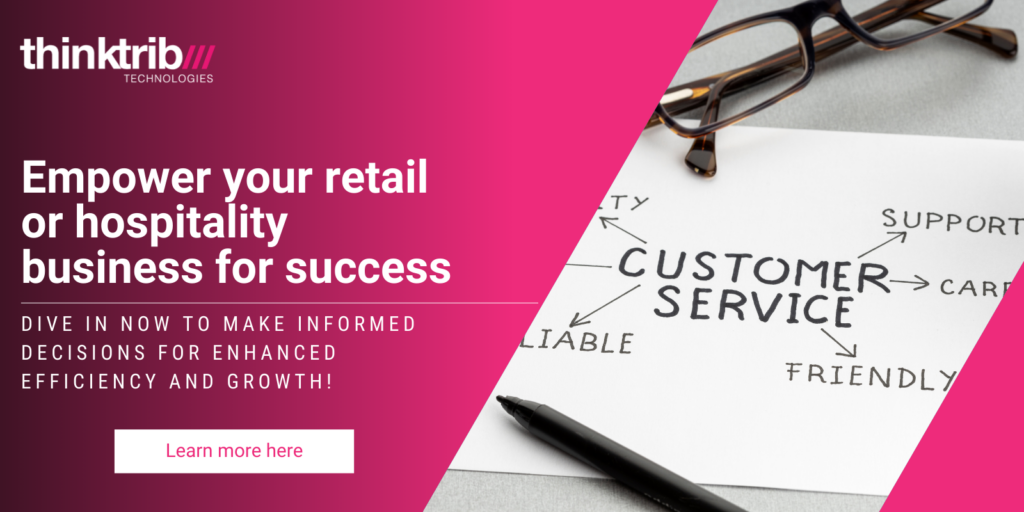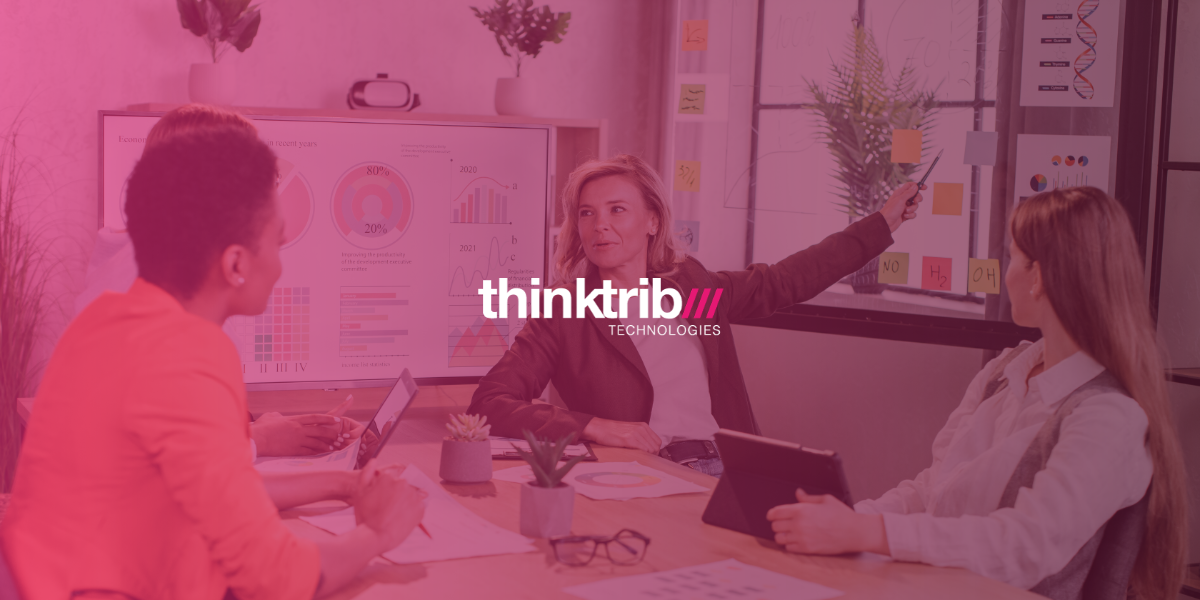Every business wants to deliver the best service to their customers as efficiently as possible; the more they can do this, the more they can profitably grow.
While pleasing customers and driving efficiency is a no-brainer for any business, when it comes to making the jump to using an ERP solution to help with these goals, retail and hospitality businesses understandably want to look before they leap!
After all, while an ERP has a lot to offer, it is also a big investment. In this piece, we take a detailed look into the practicalities of how to decide if an ERP solution is right for your retail or hospitality business.
What Is An ERP? How Can ERPs Help Hospitality And Retail Businesses?
In general, an Enterprise Resource Planning system is a comprehensive software platform that is used to better manage and integrate a range of business processes into an interoperating and scalable whole. For retail and hospitality businesses, ERPs can unlock improvements in areas like:
- Inventory and supply chain management
- Customer services and sales
- Operational efficiency
- Financial management
- Venue and facilities management
An ERP can help a business to eliminate under and over-stocking, upsell to its customers both in-store and using digital channels, make it easier to review and improve the performance of different branches using accurate and interconnected data, and more.
Getting Started With Assessing ERP Solutions
A helpful starting point is to outline the pain points of your business that an ERP can help with, alongside the more direct benefits that it can offer, and connect the two sides of the coin with specific features and tools of ERPs.
You can then broadly compare different ERP solutions against these criteria to frame the net benefit that an ERP can offer to your business more precisely.
To improve the precision of your estimates, having one or two specific ERP solutions under consideration can be helpful. An ERP specialist can help you to hone in on the right ERP solutions for your business and assess the costs and benefits involved.
With a general understanding of the benefits and pain points that an ERP can address in your business, alongside potentially one or two specific solutions that can meet the criteria, you can start working out the potential net benefit that an ERP can offer to your business.
Tools For Assessing an ERP Solution
Before going ahead with an ERP solution, you’ll want to ensure it will offer enough of a substantial net benefit. To do this accurately, capturing all of the information using the right tools and frameworks will be essential.
To get a holistic picture, the benefits and the costs should be examined using a tangible and measurable lens, as well as through an intangible and more descriptive lens. Bringing this together, the weighing up of the net benefit of an ERP implementation can include things like:
- Sales data and forecasts
- Feedback from frontline staff, managers, and directors
- Upfront costs associated with procuring and implementing the ERP
- Customer reviews
- Estimated saved labor time and supply chain costs
- Unit costs across business processes
- Training and costs associated with operational downtime
To organize the benefits and costs together holistically, you can work them out using a combination of TCO (Total Cost of Ownership) and TBO (Total Benefits of Ownership), which does not have to be as technical or overwhelming as it sounds!
- TCO is the overall cost of owning and operating an ERP across its lifecycle. It factors in the costs beyond initial procurement and implementation costs.
- TBO is conversely, the overall benefit of owning and operating an ERP across its lifecycle, factoring in quantifiable and less quantifiable benefits.
We will explore how to work out TCO and TBO very shortly, but in a nutshell, by understanding both, you will be able to estimate how much of an ROI an ERP can bring to your business.
Working Out The Total Cost and Benefits of Ownership For Your ERP
To work out the TCO and TBO of an ERP, start with documenting the costs and benefits for your business across tangible and less tangible measures; as you go through this process, working with data and stakeholders to bring this assessment together, the overall promise of an ERP solution will become clearer, as will the degree of net benefit that it can offer.
Alongside the costs and benefits, you will need to define a timeframe for the TCO and TBO to be worked out within. For an ERP, this is usually between 5-10 years.
For a more accurate picture, the benefits and costs should be worked out across each year. Relatedly, as the costs will be highest earlier on across the lifecycle of the ERP, breaking even on the investment will likely take anywhere between 1-3 years.
You can break down the elements to consider against four key categories: tangible costs, intangible costs, tangible benefits, and intangible benefits:
Tangible Costs:
- Software Acquisition: Costs of purchasing or licensing the ERP software.
- Hardware Investment: If needed, the expense of acquiring new hardware such as POS systems, or upgrading existing infrastructure to support the ERP.
- Implementation Costs: Expenses related to the installation, configuration, and deployment of the ERP system, including third-party costs (e.g an ERP specialist)
- Training: Costs for training staff on how to use the new system.
- Maintenance and Support: Ongoing costs for maintaining, updating, and supporting the ERP software.
- Integration: Expenses related to integrating the ERP system with existing systems as well as data migration.
- Operational Downtime: Costs associated with reduced productivity during the transition to the new system.
Intangible Costs:
- Employee Resistance: Challenges in change management and employee adaptation to the new system.
- Potential Disruption: Impact on business operations during the transition period.
- Dependence on Vendor: Risks associated with reliance on the ERP vendor for support and upgrades.
Tangible Benefits:
- Efficiency Gains: Reduction in time and resources required across various business processes, such as reduced unit costs.
- Reduced Labor Costs: Savings from decreased need for manual input or data processing.
- Inventory Reductions: Cost savings from better inventory management.
- Improved Sales: Increased revenue from improved customer relationship management and service.
- Reduced Material Costs: Savings achieved through better supply chain management.
Intangible Benefits:
- Improved Decision Making: Enhanced ability to make informed decisions due to better data availability and analytics.
- Customer Satisfaction: Increased customer satisfaction due to improved service, responsiveness, and product availability.
- Employee Morale and Productivity: Benefits from streamlining workflows and reducing workloads.
- Agility and Scalability: The ERP system’s ability to adapt to changing business needs and scale as the company grows.
- Compliance and Risk Management: Improved compliance with regulations and reduced risk of errors.
Estimating The ROI Of Your ERP Solution
By working out the estimated costs and benefits of procuring, implementing, and maintaining an ERP in your business, you can now estimate the ROI that it will provide across its lifecycle. To do this, follow these three steps:
- Subtract the Total Cost of Ownership from the Total Benefits of Ownership.
- Divide this result by the Total Cost of Ownership to get a numerical ROI.
- Multiply by 100 to convert it to a percentage.
And there you have it, an estimated ROI for your business! Now that you have a framework you can follow, what might this look like in an example?
A Practical Example: Bella’s Restaurant
Let’s apply the model we have discussed here using a simple example. Bella’s restaurant is a popular local dining business with two venues in one city. They’ve been managing their operations with a mix of standalone software and manual processes, but are considering an ERP solution to streamline their operations and improve customer experiences.
Step 1: Identifying Needs and Potential ERP Benefits
Before Bella and her team get out the calculators and itemize the costs and benefits, they start by examining the broader pain points an ERP can help them to address, alongside the direct benefits:
Pain Points:
- They are having difficulty with tracking inventory in real-time and minimizing the waste of their perishable inventory.
- There are inefficiencies in handling customer data and personalizing their experiences.
- Manually done, partial, and time-consuming reporting processes.
Desired Benefits:
- Integrating resource management across all departments.
- A unified customer relationship management system.
- Automated and accurate financial reporting.
With an understanding of the problems an ERP can help address and the benefits they would like to see, they scout for an ERP that has the best functionality for their business, going with Aptean ERP.
Step 2: Assessing TCO and TBO
They then get to work assessing the Total Cost of Ownership and the Total Benefits of Ownership:
Tangible Costs Over 5 Years:
- Software Acquisition: $20,000 for the ERP system.
- Hardware Investment: $5,000 for new POS systems.
- Implementation Costs: $10,000 for professional services.
- Training: $3,000 initially and $1,000 annually for refresher courses.
- Maintenance and Support: $2,000 annually.
- Integration: $4,000 for initial integration.
- Operational Downtime: Estimated $3,000 in initial lost revenue.
- Regular Subscription Costs: $12,000 annually for the ERP software.
Total Tangible Costs:
- First Year: $47,000
- Subsequent Years: $15,000 annually for 4 years.
- Total 5-Year TCO: $107,000
Intangible Costs:
- Employee resistance and learning curve challenges.
- Short-term disruption in daily operations.
Tangible Benefits:
- First Year: Estimated at $30,000.
- Annual Increase in Benefits: They estimate a 10% compounding increase in benefits due to growing efficiency and better system utilization.
- Subsequent Years: $33,000 (Year 2), $36,300 (Year 3), $39,930 (Year 4), $43,923 (Year 5).
Total 5-Year TBO: $183,153
Intangible Benefits:
- Improved customer satisfaction and repeat business.
- Higher employee morale from streamlined workflows.
- Enhanced decision-making capabilities.
Step 3: Calculating ROI
Bringing these together, Bella then subtracts the TCO ($107’000) from the TBO ($183’153) over the five-year period to get the calculated ROI, which is $76’153.
Bella then divides this by the TCO figure and then multiples it by 100 to get the ROI as a percentage, which is 71.1% in this case.
With these insights, Bella is able to conclude that the ERP will provide a substantial ROI for the business, but it will take two years for this to break even. After this, stabilizing costs mixed with mounting benefits will produce compounding benefits over the years.
Final Thoughts
Deciding whether an ERP solution is right for your business involves a careful look at both quantitative and qualitative factors. From a practical financial standpoint to the impact on employee productivity and customer satisfaction, every aspect should be considered.
While this can take time, given the magnitude of benefits an ERP could offer, knowing it will benefit your business can help you move forward with implementing an ERP with clarity and confidence.
The example story illustrates how a well-implemented ERP system can transform a retail business, providing a roadmap for other businesses contemplating this significant investment.
ThinkTribe: Dubai and the Middle-East’s Proven ERP Implementation Specialists
Welcome to ThinkTribe, the premier choice for ERP implementation in Dubai and throughout the vibrant Middle-Eastern landscape. As seasoned specialists in system integration and ERP solutions, we excel in fostering profitable and scalable growth for businesses spanning various sectors, leveraging state-of-the-art technology solutions.
Whether you’re eager to harness the power of ERP for your enterprise in Dubai or any other part of the Middle-East, seeking tailored advice to select the ideal solution, or require hands-on support throughout the implementation process, our dedicated team is here to support you at every turn. Reach out to us today, and let’s propel your business towards success together.



